How to Grow Palm Trees in Pots A Complete Guide.
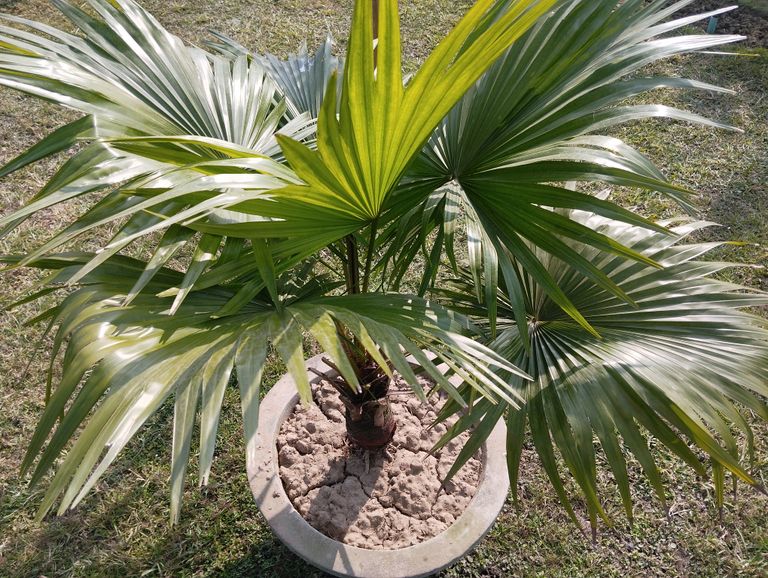
Palm trees are a popular choice for gardeners and plant enthusiasts because of their elegant appearance and low-maintenance requirements. Growing a palm tree in a pot is a great option for those with limited space or who want to add tropical beauty to patios, balconies, or indoor settings. In this guide, we’ll discuss the step-by-step process of planting and caring for a palm tree in a pot.
- Selecting the Right Palm Tree
Before starting, choose a palm tree species suitable for pot cultivation. Some of the best options include:
Areca Palm
Parlor Palm
Pygmy Date Palm
Chinese Fan Palm
These species thrive in confined spaces and adapt well to indoor and outdoor environments.
- Choosing the Right Pot
The pot is a critical element in the growth of your palm tree. Keep the following factors in mind:
Size: The pot should be 2-3 inches wider than the root ball of the plant.
Drainage: Ensure the pot has adequate drainage holes to prevent waterlogging.
Material: Terracotta, plastic, or ceramic pots work well, but lightweight options are preferable for portability.
- Preparing the Soil
Palm trees prefer well-draining soil. You can either purchase pre-mixed palm soil or create your own mix by combining:
50% potting soil
25% sand
25% perlite or peat moss
Add a layer of small stones or gravel at the bottom of the pot to enhance drainage.
- Planting the Palm Tree
Follow these steps to plant your palm tree in a pot:
- Fill the pot halfway with the prepared soil mix.
- Place the palm tree’s root ball in the center of the pot.
- Add more soil around the root ball, ensuring it is firmly held in place. Avoid burying the trunk too deeply.
- Leave about 1-2 inches of space at the top of the pot for watering.
- Watering Requirements
Water the plant thoroughly immediately after planting.
Maintain consistent moisture but avoid overwatering. Allow the top inch of soil to dry before watering again.
Reduce watering frequency during colder months.
- Sunlight and Placement
Palm trees typically thrive in bright, indirect sunlight. Follow these tips:
Place the pot in a location with 4-6 hours of sunlight daily.
For indoor palms, choose spots near windows with filtered sunlight.
Rotate the pot occasionally to ensure even growth.
- Fertilizing the Palm Tree
Feed your palm tree with a balanced, slow-release fertilizer specifically designed for palms.
Apply fertilizer every 6-8 weeks during the growing season (spring and summer).
Avoid over-fertilizing, as it can damage the roots.
- Pruning and Maintenance
Remove dead or yellowing fronds with sterilized pruning shears.
Avoid trimming healthy green fronds, as they are essential for photosynthesis.
Wipe the leaves regularly to remove dust and pests.
- Pest and Disease Management
Common pests include spider mites, mealybugs, and scale insects. To control them:
Use insecticidal soap or neem oil.
Check the plant regularly for signs of infestation.
Additionally, ensure proper drainage to prevent root rot and fungal infections.
- Repotting the Palm Tree
Repot your palm tree every 2-3 years or when it outgrows its current pot.
Choose a pot that is 2 inches larger in diameter than the previous one.
Replace old soil with fresh, nutrient-rich soil during repotting.
Growing a palm tree in a pot is a rewarding experience that adds a touch of tropical elegance to any space. By following the guidelines on selecting the right species, preparing the pot and soil, and ensuring proper care, your potted palm tree will thrive for years. Whether indoors or outdoors, this versatile plant can transform your living space into a serene oasis.
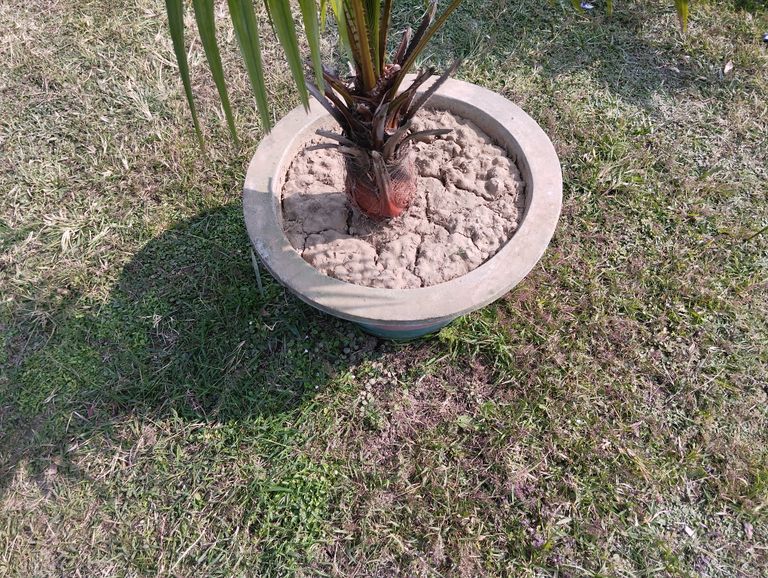
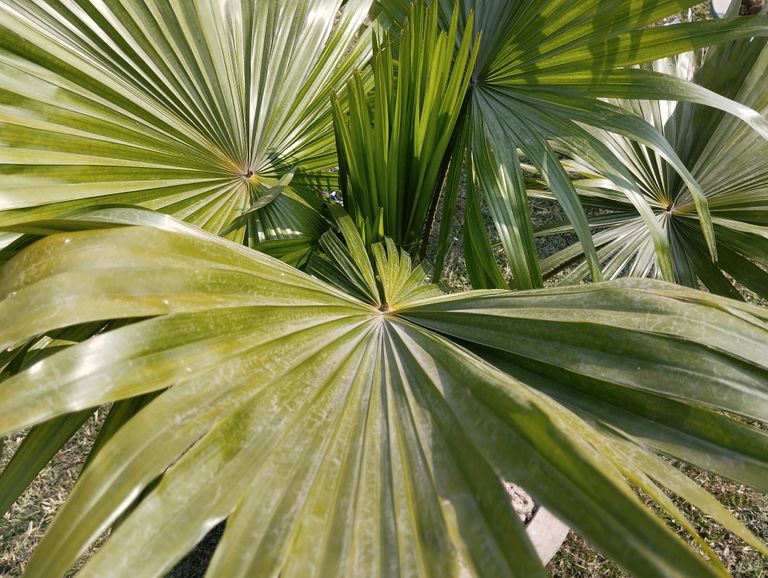
Decorating Your Garden with Palm Trees and Flowers
Gardening is an art that brings life and beauty to your surroundings. If you are looking for a unique and aesthetically pleasing way to decorate your garden, consider combining tall palm trees with vibrant flowers. This combination not only adds a tropical touch but also creates a visually striking and serene environment.
Why Palm Trees?
Palm trees are synonymous with elegance and tropical vibes. Their towering height and lush green fronds provide an excellent backdrop for any garden. They are also low-maintenance and thrive in various climates, making them a versatile choice for landscaping.
Choosing the Right Palm Trees
Depending on your location and the size of your garden, you can choose from several types of palm trees:
- Date Palm: Ideal for large gardens; adds a majestic look.
- Areca Palm: Perfect for smaller gardens or as indoor decor.
- Fan Palm: Known for its fan-shaped leaves; great for creating shade.
- Coconut Palm: Adds a true tropical essence to your garden.
Incorporating Flowers into Your Palm Garden
Flowers bring color and vibrancy, complementing the green of palm trees. When selecting flowers, consider the following:
- Tropical Flowers: Bougainvillea, hibiscus, and frangipani are excellent choices.
- Ground Cover Plants: Use flowering ground covers like periwinkle or marigold to fill spaces around the base of palm trees.
- Climbing Flowers: Train climbers like jasmine or morning glory to grow on trellises near the palm trees for a layered look.
Designing the Layout
A well-planned layout enhances the overall appeal of your garden. Here are some tips:
- Cluster Planting: Group palm trees with flowers in clusters to create focal points.
- Borders and Pathways: Line garden paths with flowering plants for a welcoming effect.
- Layered Heights: Plant shorter flowers near the base and taller flowering shrubs further out for depth.
Maintenance Tips
A garden with palm trees and flowers is relatively easy to maintain. Here’s how to keep it thriving:
Watering: Palm trees require moderate watering, while flowers may need more frequent care.
Pruning: Regularly prune palm fronds and dead flowers to maintain neatness.
Fertilizing: Use a balanced fertilizer to ensure both the trees and flowers receive adequate nutrients.
Adding Decorative Elements
Enhance the natural beauty of your garden by incorporating decorative features like:
Stone pathways winding around the palm trees.
Outdoor seating beneath the shade of the trees.
Solar-powered lights to illuminate the garden at night.
Decorating your garden with palm trees and flowers is a fantastic way to create a peaceful and visually appealing outdoor space. The combination of tall, elegant palm trees and vibrant, colorful flowers offers a perfect balance of height and texture, making your garden a true paradise. With proper planning and care, your garden can become a haven of beauty and relaxation for years to come.
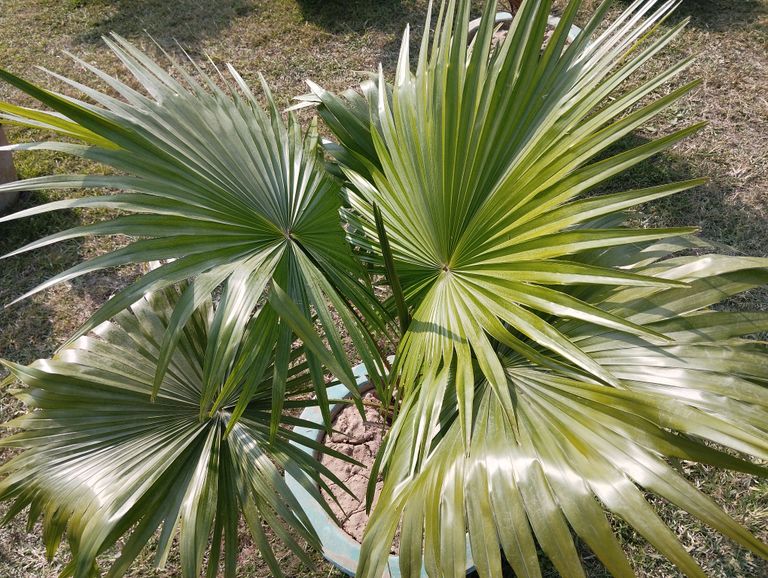
The Majestic Beauty of the Palmyra Palm Blossom
Nature has gifted us with countless marvels, and among them stands the magnificent Tal Tree (Palmyra palm or Borassus flabellifer). Widely regarded as a symbol of resilience and utility, the Tal Tree’s flowers are often overlooked in discussions of its beauty. However, the blossoms of this tree are a breathtaking spectacle that deserves appreciation.
This blog explores the beauty of the Tal Tree flowers, their significance in culture and ecology, and the serenity they bring to the landscapes they grace.
A Glimpse of the Tal Tree
The Palmyra palm, known as "Talgach" in Bengali, is a towering tree often seen dotting the rural and coastal landscapes of South and Southeast Asia. It stands tall with a straight trunk and fan-like leaves, symbolizing strength and endurance. But beneath this sturdy exterior lies a delicate beauty—the Tal blossoms.
The Blossoms of the Palmyra Palm
The flowers of the Tal Tree are as intriguing as the tree itself. These blossoms grow in dense clusters at the top of the tree, encased within large, protective sheaths. The flowers come in two types—male and female—both unique in appearance and contribution to the ecosystem.
- Male Flowers
The male flowers are slender and golden, exuding a subtle fragrance that attracts bees, butterflies, and other pollinators. They grow in long spikes, creating a striking visual contrast against the tree's sturdy trunk and lush green canopy.
- Female Flowers
The female flowers are larger and more robust, with a slightly rounded structure. These blossoms, after pollination, develop into the Tal fruit—a vital source of nutrition and livelihood in many regions.
A Symbol of Natural Harmony
The blooming of Tal Tree flowers is a quiet yet mesmerizing event. The delicate blossoms sway gently in the wind, their golden hues shimmering in the sunlight. The sight of these flowers against a clear blue sky creates a sense of harmony and peace, reminding us of nature’s quiet elegance.
The blossoms are also significant in maintaining ecological balance. They serve as a vital food source for pollinators, including bees and butterflies, which play an essential role in fertilization and fruit production.
Cultural Significance of Tal Blossoms
In many regions, the Tal Tree is revered for its utility, and its flowers hold cultural importance. During traditional ceremonies, parts of the Tal Tree, including its blossoms, are used as offerings, symbolizing purity and abundance. The flowers also inspire poetry, art, and folklore, reflecting the deep connection between people and nature.
The Beauty in Utility
Beyond their aesthetic appeal, Tal blossoms are incredibly useful. Their nectar is often harvested to produce palm jaggery, a cherished delicacy in many cuisines. The flowers also have medicinal properties, contributing to holistic healing practices in traditional medicine.
The blossoms, along with the tree's other parts, emphasize the perfect balance of beauty and utility that the Tal Tree embodies.
Where to Experience the Tal Blossom’s Beauty
If you want to witness the charm of Tal Tree flowers, the best time is during their blooming season, typically in spring. Rural areas with abundant Tal Trees, like the coastal regions of Bengal, Tamil Nadu, or Sri Lanka, offer the most picturesque views of these blossoms.
The Tal Tree flower is a humble yet enchanting creation of nature. While the towering height and durable wood of the Tal Tree often take the spotlight, its blossoms remind us to appreciate the subtler aspects of beauty. These flowers, with their golden glow and ecological importance, serve as a testament to the intricate harmony of life that exists in our natural world.
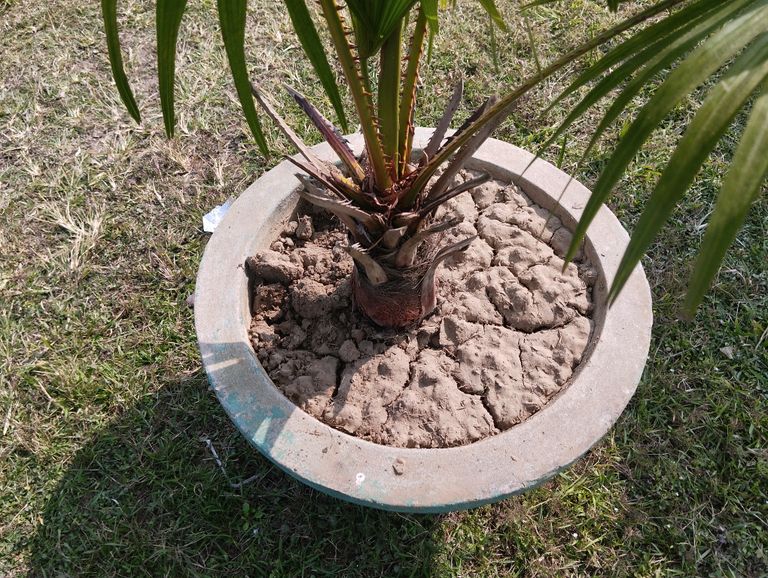
The Length of Palmyra Palm Flowers
The Palmyra palm tree, scientifically known as Borassus flabellifer, is an iconic tree commonly found in tropical regions, particularly in South and Southeast Asia. It is highly regarded for its economic, cultural, and ecological significance. Among its many fascinating features is its unique flowering system, which plays a crucial role in its reproduction and ecological contribution. This article delves into the structure, characteristics, and remarkable length of Palmyra palm flowers, offering insights into their importance in nature and beyond.
Overview of the Palmyra Palm
The Palmyra palm is a tall, robust tree that can grow up to 30 meters in height. Its fan-shaped leaves, sturdy trunk, and rounded fruits make it easily recognizable. The tree thrives in arid and semi-arid climates, serving as a vital resource for the communities that depend on it. From its wood and leaves to its fruits and sap, almost every part of the Palmyra palm is useful.
One of the lesser-discussed aspects of this tree is its flowering process, which is both fascinating and crucial for its life cycle.
Structure of Palmyra Palm Flowers
The flowers of the Palmyra palm are arranged in large, dense clusters called inflorescences. These inflorescences are borne on long stalks that emerge from the crown of the tree. The tree is dioecious, meaning male and female flowers are found on separate trees.
Male Flowers: The male flowers are small and clustered, found on long, slender spikes that can extend several meters in length.
Female Flowers: The female flowers are larger and more conspicuous, typically found on shorter stalks compared to the male flowers.
Length of Palmyra Palm Flowers
The male inflorescences of the Palmyra palm are particularly notable for their impressive length. These flower stalks can grow up to 1.5 to 2 meters (approximately 5 to 6.5 feet) long, making them a striking feature of the tree. The elongated structure allows for efficient pollination, as the wind carries pollen from the male flowers to the female flowers of neighboring trees.
In contrast, the female flower stalks are relatively shorter, typically measuring around 1 meter (3.3 feet) in length. However, they are more robust and are designed to support the development of fruits after pollination.
Ecological and Cultural Significance
The flowers of the Palmyra palm are integral to its ecological role in the environment. They attract various pollinators, including bees and insects, which facilitate the pollination process. Additionally, the tree provides habitat and food for numerous bird species and other wildlife.
In many cultures, Palmyra palm flowers and their derivatives hold cultural significance. The nectar from the flowers is used to produce palm sugar and jaggery, while the tree itself is often associated with resilience and sustainability.
The Palmyra palm, with its long and striking flowers, is a marvel of nature. The male inflorescences, stretching up to 2 meters, stand as a testament to the tree's adaptability and ecological importance. Whether admired for their beauty or valued for their utility, the flowers of the Palmyra palm underscore the intricate relationships within natural ecosystems. As we continue to explore and appreciate such wonders, it is essential to ensure the preservation of these trees for future generations.
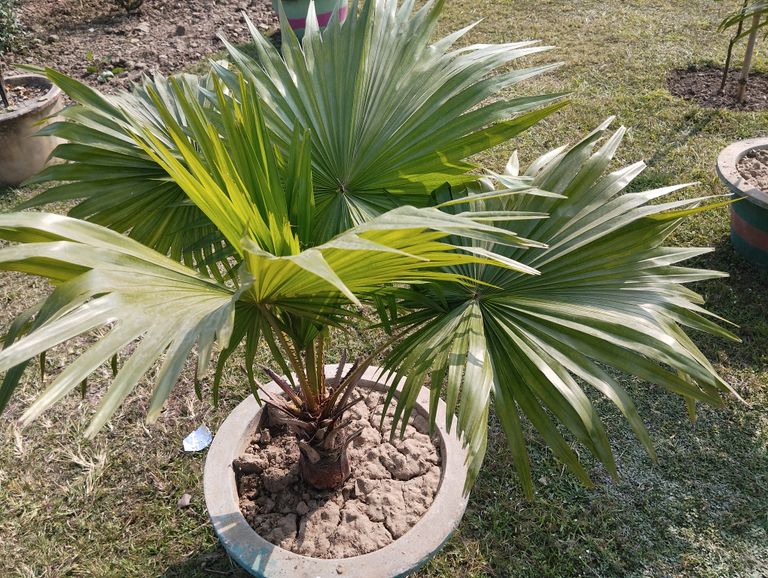
Exporting Palmyra Flowers: A Booming Opportunity in Agriculture
The Palmyra tree, scientifically known as Borassus flabellifer, is widely recognized for its various uses, from providing fruits and timber to producing sap for jaggery and alcohol. However, one of its lesser-known yet economically significant parts is the Palmyra flower. This unique flower has gained popularity in international markets due to its medicinal properties, aesthetic value, and versatility in industries like pharmaceuticals, cosmetics, and herbal products. In this blog, we will explore the potential of exporting Palmyra flowers, their benefits, and the opportunities this niche market offers.
The Unique Features of Palmyra Flowers
Palmyra flowers, often referred to as "toddy palm flowers," are small and yellowish-brown in color, growing in clusters on the tree. They are rich in antioxidants, vitamins, and minerals, which make them valuable in the health and wellness industry. The flowers also have cultural significance in many Asian countries and are used in traditional medicine to treat ailments like respiratory issues, digestive problems, and skin conditions.
Global Demand for Natural Products
With the increasing demand for natural and organic products worldwide, Palmyra flowers have found a special place in the export market. Countries like the United States, Germany, Japan, and South Korea have shown significant interest in importing these flowers due to their medicinal and cosmetic applications. Additionally, the trend of using natural ingredients in beauty and wellness products has further boosted their demand.
Uses of Palmyra Flowers
- Pharmaceuticals: Palmyra flowers are used in the preparation of herbal medicines to treat various health conditions, including coughs, colds, and inflammation.
- Cosmetics: Extracts from the flowers are used in skincare products for their anti-aging and soothing properties.
- Food Industry: The flowers are sometimes used as flavoring agents or natural sweeteners.
- Traditional Practices: In many cultures, these flowers are used in rituals, decorations, and aromatic preparations.
Opportunities in the Export Market
- Untapped Potential
Despite their numerous benefits, the export market for Palmyra flowers remains largely untapped. This presents a golden opportunity for farmers and entrepreneurs to capitalize on the growing global demand.
- High-Value Product
Due to their rarity and medicinal value, Palmyra flowers are considered a high-value product. Exporters can fetch premium prices in international markets.
- Government Support
Many governments, especially in South Asia, are encouraging the export of non-traditional agricultural products by providing subsidies, training, and infrastructure support. This makes it easier for small and medium-scale businesses to enter the export market.
- Eco-Friendly Business
The sustainable nature of Palmyra trees and their flowers aligns with the global movement towards environmentally friendly and sustainable products, adding to their appeal.
Challenges in Exporting Palmyra Flowers
While the opportunities are vast, there are certain challenges that exporters need to address:
- Quality Control: Maintaining consistent quality is crucial to meet international standards.
- Perishability: As a natural product, Palmyra flowers are perishable and require proper storage and transportation facilities.
- Market Awareness: Educating potential buyers about the benefits and uses of Palmyra flowers is necessary to create a strong demand.
Steps to Start Exporting Palmyra Flowers
- Market Research: Identify target markets and understand their import requirements.
- Quality Assurance: Ensure that the flowers meet international standards by adhering to best practices in harvesting, processing, and packaging.
- Regulatory Compliance: Obtain necessary certifications and licenses required for export.
- Building Networks: Partner with local farmers and international buyers to establish a reliable supply chain.
- Promotional Activities: Participate in trade fairs, exhibitions, and online platforms to showcase the benefits of Palmyra flowers.
The export of Palmyra flowers presents a lucrative opportunity for farmers and entrepreneurs looking to diversify their agricultural income. With increasing global demand for natural and sustainable products, these flowers have the potential to become a key player in the international market. By addressing challenges and leveraging the available resources and support, exporters can tap into this promising niche and contribute to the growth of the agricultural export sector.